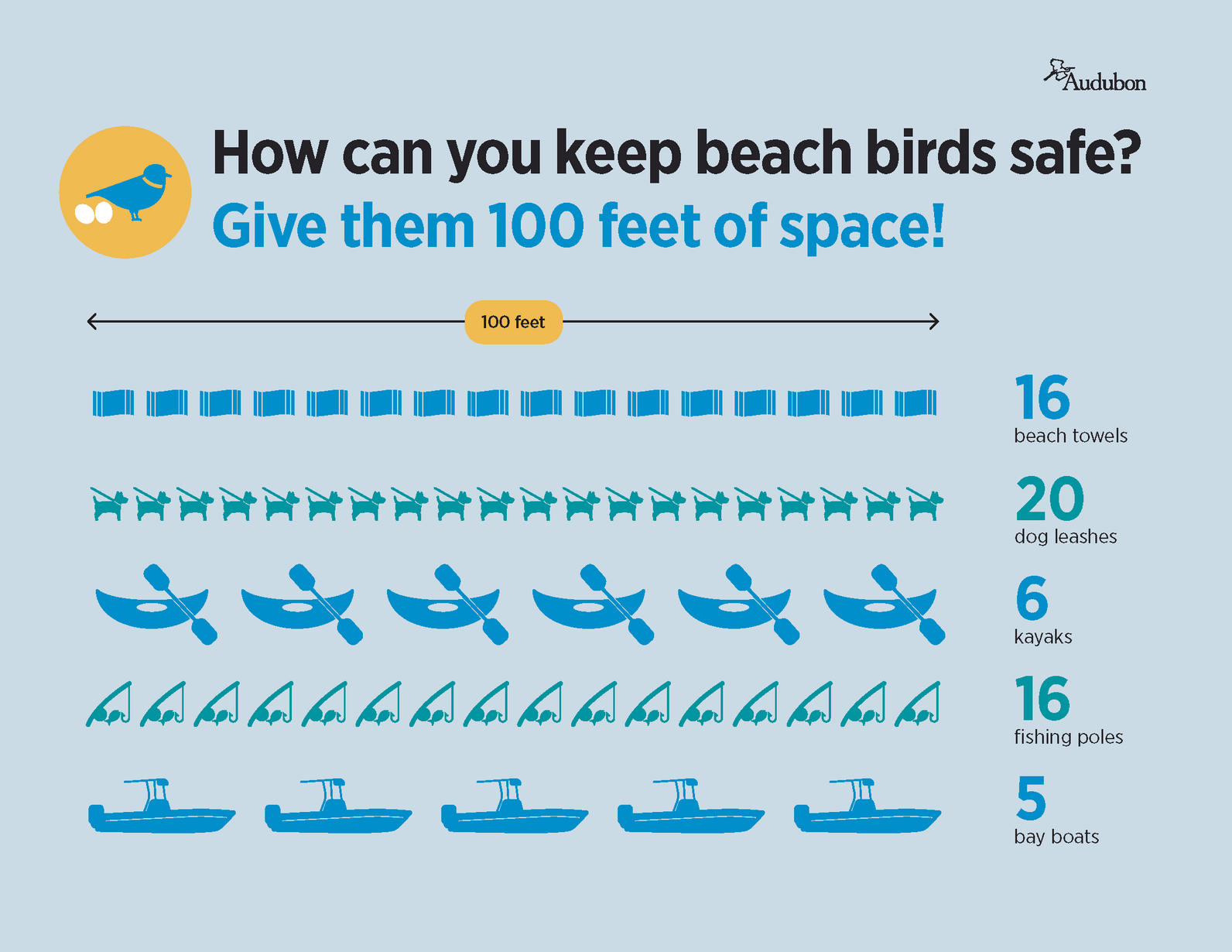Threatened birds like Wilson’s Plovers, American Oystercatchers, Black Skimmers and Least Terns have returned to South Carolina’s coast, and need our help to successfully nest and raise their young.
“As South Carolinians, we pride ourselves on our beautiful coastline. A major part of that beauty is the coastal birds who come here each year to nest and refuel during their long migrations,” says Allyssa Zebrowski, Coastal Stewardship Coordinator at Audubon South Carolina. "It’s extremely important that beachgoers give these birds the space they need to thrive, particularly during the crowded holiday weekend.”
Due to coastal birds’ impressive camouflage, beachgoers are often surprised to learn there are numerous species nesting directly on our beaches in the area above the high-tide line, and far enough from the dune grass that they can see predators coming from a distance. When dogs or humans come too close, these birds are frightened away from their nests, which they spend all summer tirelessly tending and protecting. This leaves their eggs and chicks vulnerable to serious threats including overheating, predation, and even being crushed underfoot by unaware people.
Whether you love the beach for sunbathing, walking your dog, fishing, kayaking or boating, the good news is there are easy ways to share the love and #ShareTheShore with our coastal birds. Simply remember these four tips to make our beaches safer for birds and their babies:
- When space allows, always give nesting birds at least 100 feet, or about six car lengths, of distance;
- Be sure to steer clear of roped off areas, which indicate active nesting grounds;
- If pets are permitted on the beach, keep them leashed and away from birds and posted nesting areas; and
- When boating, pay attention to beach and island closures, which are designed to protect vulnerable bird populations, and be mindful not to land your boat too close to roped off areas.

Share the Beach Distances Infographic - please share with your friends and family!
“Our coastal bird populations are in crisis, and they really need your help,” says Nolan Schillerstrom, Coastal Program Associate at Audubon South Carolina. “It’s as easy as being mindful and giving them sufficient space from you and your furry friends when you’re out enjoying our beaches, sandbars, and islands.”
Due to compounding threats including sea-level rise, habitat loss, and human disturbance, North American seabirds have decreased by 70 percent since 1950, with an even steeper decline in North American shorebird species since 1973. Audubon’s Coastal Bird Stewardship Program aims to reverse these trends across South Carolina and the country by engaging coastal communities and visitors in the protection of beach-nesting birds.
“Audubon's staff and volunteer stewards work incredibly hard to give our beach birds a fighting chance,” says Schillerstrom. “Unfortunately, we can’t be everywhere at all times--which is why it is so important for every beachgoer and boater to do their part by giving birds a minimum of 100 feet of space to successfully nest and raise their young.”



